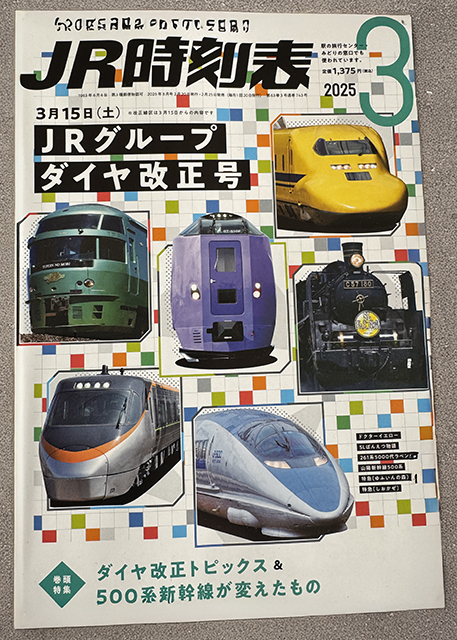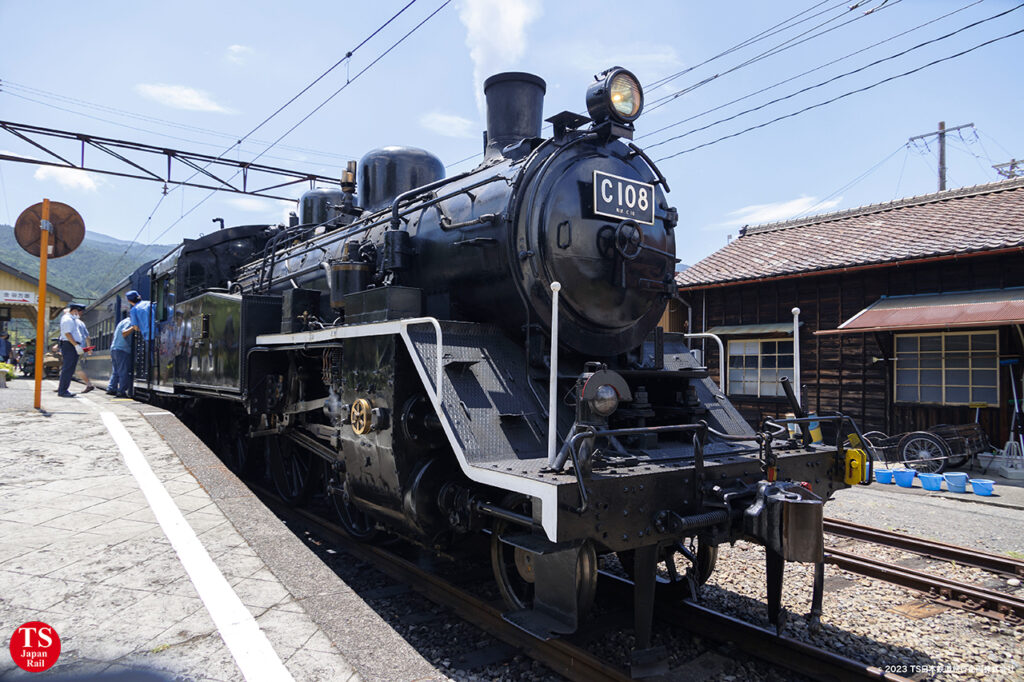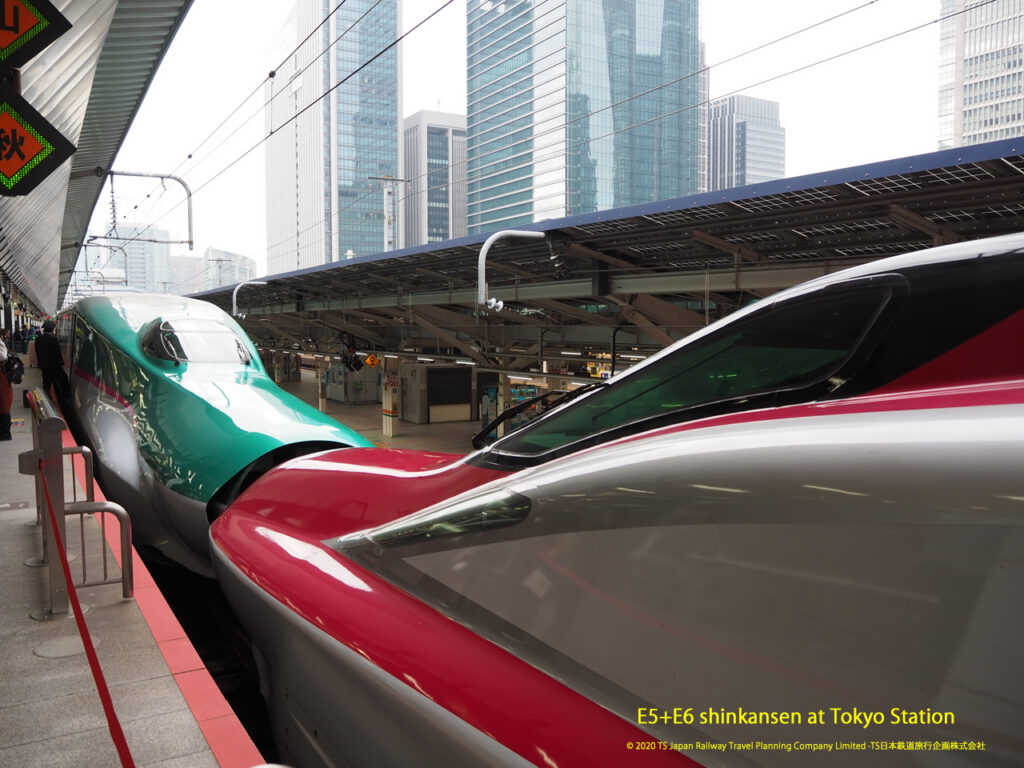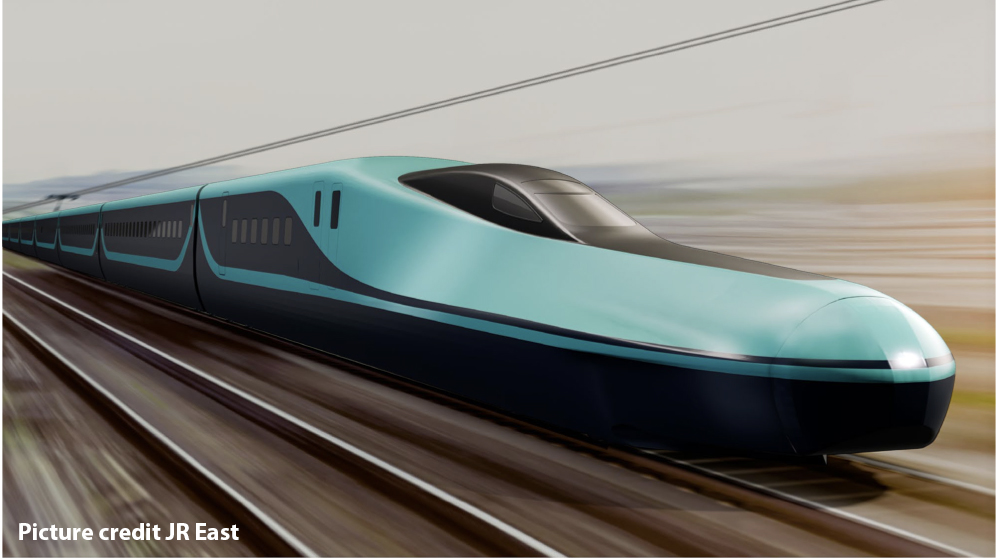Spring is here?
Welcome to the March 2025 Japan Rail Enthusiast updates. Here in Tokyo we have alternated between days that are as warm as April or even early May to other days that are cold as February or even January. Amongst locals the debate is whether the sakura will be here next week or the week after (we do not pay much attention to the forecasts).
With Japan’s many scenic rural lines with interesting rolling stock it is a good time to not only Explore Japan’s Railways, but also to explore the real Japan!
Big event for TSJR was my appearance on NHK World’s Japan Railway Journal. This particular program was about the printed timetable books, which are still popular in Japan despite the increasing use of mobile phone apps.
We have other news which we think will be of interest to international rail fans interested in Japan, so please read on….
Stephen Turner, President of TS Japan Rail
- March Timetable changes
- TSJR’S Turner featured on NHK World’s Japan Railway Journal
- Oigawa Main Line to be fully restored in stages. Full line reopening expected in 2029. SL / EL fares have been increased.
- JR East to have a 10 day option for its Tohoku Pass
- JR East Tohoku Shinkansen has second “train decoupling” incident…
- JR East announces its next shinkansen model to be used on the Tohoku Shinkansen
- Start of operations of the Hokkaido Shinkansen extension to Sapporo delayed until 2038 at the earliest
March Timetable changes
Here is a quick summary of the main timetable changes in the 15th March 2025 timetable:

Here is a quick summary of the main timetable changes in the 15th March 2025 timetable:
Tokaido ~ Sanyo Shinkansen (JR Tokai & JR West)
- Tokaido and Sanyo Shinkansen: Non reserved cars on Nozomi services reduced from 3 to 2. Increase in Women Only Toilets on 16 car Nozomi, Hikari and Kodama trains.
JR East
- Tohoku Shinkansen: Increase in the number of Hayabusa trains.
- Yamagata Shinkansen: Number of Tsubasa services is increased. Most trains will be operated by the new E8 units. One train in each direction (Tsubasa 131 (Tokyo->Shinjo) & 124 (Yamagata->Tokyo) will operate connected to Hayabusa service between Tokyo and Fukushima with journey times speeded up.
- Limited Express Azusa & Limited Express Kaiji: More services will start / end their journeys at Tokyo Station rather than Shinjuku and will have 12 coaches.
JR West
- Introduction of the Kaisoku Oshirushito service (Rapid trains with premium car – premium car requires booking / supplement) on the JR Biwako Line (Tokaido Main Line); JR Sugano Line, JR Nara Line and JR Takarazuka Line
- Commuter Limited Express Rakuraku Harima (Aboshi~ Osaka / Kyoto) services are increased (2 in each direction)
- Limited Express Mahroba (Osaka~Nara) has become a daily service. Trains on this service will be upgraded, first will be be introduced 5th April. Second will be introduced Autumn 2025.
JR Kyushu
- Limited Express Asoboy will only operate between Kumamoto and Miyachi (no longer will operate to / from Oita and Beppu) but frequency will be increased to 2 round trips a day.
JR Hokkaido
- Some Limited Express Hokoto (Hakodate~Sapporo) and Limited Express Ozora (Sapporo~Obihiro~Kushiro) services will have their journey times speeded up.
JR Shikoku
- All Limited Express Uzushio (Takamatsu~Tokushima) services will be operated by newer 2600 & 2700 series DMUs with speed up of some journeys.
TSJR’S Turner featured on NHK World’s Japan Railway Journal

TSJR’s Turner took part in the NHK World’s Japan Railway Journal program called the “The enduring Charm of Printed Timetables”.The printed timetable books are still popular in Japan with 100,000 copies being sold monthly. TS Japan Rail makes use of the full timetable in preference to travel apps when working on client itineraries. Our article explains more. You can watch the program from NHK World’s website (link via our article or directly below)
Oigawa Main Line to be fully restored in stages. Full line reopening expected in 2029. SL / EL fares have been increased.

Oigawa Tetsudo has announced that it expects its Main Line to be fully reopened by 2029. More than half of the line that runs from Kanaya to Senzu in Shizuoka Prefecture has been closed since storms in September 2022 caused major damage.
The company has said that it has basically raised funds to restore the whole line, however securing labour to carry out the work is difficult.
The Oigawa Railway with its steam and other vintage train operations relies heavily on tourists as does the surrounding sparsely populated area. Oigawa Railway is known for its Thomas events.
Oigawa Tetsudo has also announced an increase in the cost of tarvelling on the SL / EL trains from Y1,000 to Y1,500 (plus basic fare ticket). The rise is effective from 20th March.
JR East to have a 10 day option for its Tohoku Pass
From May 10th 2025 JR East will introduce a 10 day version of its JR East Pass Tohoku Area. Currently there is only a 5 day pass (cosy Y30,000). The 10 day pass will cost Y48,000 (half price for children up to 12 years old). Like the 5 day pass it is only valid for consecutive days.
This pass is only available to foreigners visiting Japan and Foreigners who are resident in Japan (passport is needed when collecting pass).
For more information on this pass please see the TS Japan Rail JR Rail Pass Guide on our main site.
JR East Tohoku Shinkansen has second “train decoupling” incident…
On the 5th March 2025 a second incident involving a Hayabusa and Komachi shinkansen becoming uncoupled occurred. This time the incident occurred near Nishi Nippori Station in Tokyo, just after the train had emerged from the tunnel from Ueno Station. the train was travelling at relatively slow speed and no injuries were caused. All JR East shinkansen services were disrupted for several hours.
JR East have said that an electrical fault on the E6 Komachi unit that led the train was probably responsible for the detachment. The cause is said to be different from the first incident.
Following the incident JR East decided to run all trains on the Tohoku Shinkansen with just a single E2 or E5 unit (with some extra trains operating as separate E3/ E8 / E6 units) until March 13th with normal services resuming on March 16th. This led to a big reduction in seat capacity on the Tohoku shinkansen as well as inconvenience to passengers travelling to Yamagata and Akita Prefectures.
A similar incident occurred on 19th September 2024 when a Hayabusa and Komachi train decoupled whilst travelling at 315km/h between Furukawa and Sendai. In this incident metal fragments behind a switch in the driver’s cabin likely caused electrical misrouting, leading to the trains two units decoupling.

[Most Yamagata (E3 & E8 series) units and all Akita Shinkansen (E6 series) services operate to and from Tokyo coupled to a Hayabusa or Yamabiko (E5 series) train between Fukushima~Tokyo or Morioka~Tokyo respectively]
JR East announces its next shinkansen model to be used on the Tohoku Shinkansen

JR East has announced the successor to the E2 and E5 series shinkansen currently used on the Tohoku Shinkansen.
Designated as the E10 series (will there be an E9 series?) it will have a top speed of 320km/h (same as the E5). Other features:
- There will be no Gran Class
- Car 5 will be designed to carry freight. It will have larger doors allowing for the loading / unloading of freight at stations quick and easy.
- British design company “Tangerine” was appointed by JR East to design the external livery and internal fittings of the train. this is the first time that a non Japanese company has been involved in the design of a Japanese Shinkansen train.
- The E10 will start testing and driver training from 2027 with a view to entering commercial service in 2030
Start of operations of the Hokkaido Shinkansen extension to Sapporo delayed until 2038 at the earliest
The government has announced that the start of operations of the Hokkaido Shinkansen between Shin Hakodate-Hokuto and Sapporo will not be until 2038 at the earliest. It had been slated to start in 2030 but construction work is taking longer than expected.
TSJR visited Hokkaido last year and tarvelled on the Hakodate Main Line via Niseko, Kutchan & Otaro, which runs close to the route of the shinkansen line and we were quite surprised at how the lack of advancement of the construction work.
The good news is that the parts of the Hakodate Main Line that are due to be closed when the Shinkansen starts operations now have an extension to their lifespan.
any suggestions or questions please feel free to contact us on info@tsjapanrail.com











